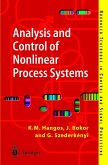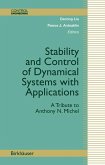For many applications, ranging from controls engineering to natural sciences and economics, precise dynamic models must be derived. In the vast majority of applications, such precise models cannot be derived by theoretical considerations only. The book discusses methods, which allow the determination of dynamic models based on measurements taken at the process, which is known as system identification or process identification respectively.
After a short introduction into the required methodology of continuous-time and discrete-time linear systems, the focus is first on the identification of non-parametric models with continuous-time signals employing methods such as Fourier transform, measurement of the frequency response and correlation analysis. Then, the parameter estimation for parametric models is presented with a focus on the method of Least Squares, followed by some of its most prominent modifications. Issues such as parameter estimation for time-variant processes, parameter estimation in closed-loop, parameter estimation for differential equations, continuous time processes and efficient implementations of the algorithms are discussed. The different methods are compared and an outlook is given on non-linear system identification methods, such as neural networks and look-up tables.
Real experimental data are given on CD-ROM, allowing to test many of the methods presented in the book with real measurements. Powerpoint slides for a 12-14 week graduate level course can be made available to teachers.
After a short introduction into the required methodology of continuous-time and discrete-time linear systems, the focus is first on the identification of non-parametric models with continuous-time signals employing methods such as Fourier transform, measurement of the frequency response and correlation analysis. Then, the parameter estimation for parametric models is presented with a focus on the method of Least Squares, followed by some of its most prominent modifications. Issues such as parameter estimation for time-variant processes, parameter estimation in closed-loop, parameter estimation for differential equations, continuous time processes and efficient implementations of the algorithms are discussed. The different methods are compared and an outlook is given on non-linear system identification methods, such as neural networks and look-up tables.
Real experimental data are given on CD-ROM, allowing to test many of the methods presented in the book with real measurements. Powerpoint slides for a 12-14 week graduate level course can be made available to teachers.
From the reviews:
"The book being reviewed may serve as a useful entry guidebook to the assembling of mathematical models for actual physical systems, some of which are even pictured. The gamut of problems that the book's material addresses is illustrated, over about seventy-five pages, with fifteen concrete examples ... . One remarkable feature of the book is an effort made to help the reader in the process of choice of models and methods through overview tables and diagrams." (A. F. Gualtierotti, Mathematical Reviews, Issue 2011 m)
"The book presents a broad spectrum of methods and approaches to dynamic system identification in a simple and unified manner. ... Each chapter is completed with a set of problems to be solved by the reader and a list of references. The book can be recommended as a good overview of contemporary parametric system identification techniques." (Zygmunt Hasiewicz, Zentralblatt MATH, Vol. 1230, 2012)
"The book being reviewed may serve as a useful entry guidebook to the assembling of mathematical models for actual physical systems, some of which are even pictured. The gamut of problems that the book's material addresses is illustrated, over about seventy-five pages, with fifteen concrete examples ... . One remarkable feature of the book is an effort made to help the reader in the process of choice of models and methods through overview tables and diagrams." (A. F. Gualtierotti, Mathematical Reviews, Issue 2011 m)
"The book presents a broad spectrum of methods and approaches to dynamic system identification in a simple and unified manner. ... Each chapter is completed with a set of problems to be solved by the reader and a list of references. The book can be recommended as a good overview of contemporary parametric system identification techniques." (Zygmunt Hasiewicz, Zentralblatt MATH, Vol. 1230, 2012)








